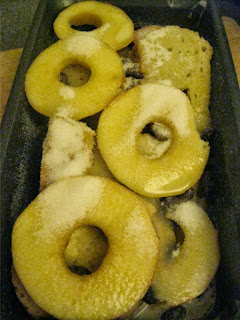I'm going to be honest with you. Until recently, I wasn't sure what you could really do with pumpkins, aside from pumpkin soup, pumpkin pie, and the obligatory Halloween carved pumpkin. But I have been shown the light - no pun intended. There are over 15 different types of pumpkins, each with their own unique taste.
You have the sweeter varieties such as sugar pumpkins, small orange pumpkins best for puréeing and mashing, as well as the more salty/savoury ones, such as Japanese pumpkins which are dark green speckled with orange, and perfect for stir-frying.
When I made this recipe, I used the a small, orange "golden nugget" pumpkin, one of the most common types of pumpkin.
PUMPKIN BITES
one small pumpkin
coarse sea salt
nutmeg
cinnamon
olive oil
sugar (optional)
Preheat the oven to 240C.
Deseed the pumpkin and cut into slices with thickness of around 1 cm.
Line a baking tray with tinfoil and place the pupkin slices.
Sprinkle the pumpkins with the salt.
Sprinkle the pumpkins with freshly ground nutmeg and cinnamon.
Drizzle the oil over the pumpkin slices, and pop in the oven for around 25 minutes.
When the pumpkin is soft to the touch it is ready to come out.
These are perfect warm with a dollop of soured cream, or cold, when you get a chewy, toffee-like texture.
If you are using sugar, sprinkle demerara sugar on the pumpkins during the last 10 minutes of cooking.
You have the sweeter varieties such as sugar pumpkins, small orange pumpkins best for puréeing and mashing, as well as the more salty/savoury ones, such as Japanese pumpkins which are dark green speckled with orange, and perfect for stir-frying.
When I made this recipe, I used the a small, orange "golden nugget" pumpkin, one of the most common types of pumpkin.
PUMPKIN BITES
one small pumpkin
coarse sea salt
nutmeg
cinnamon
olive oil
sugar (optional)
Preheat the oven to 240C.
Deseed the pumpkin and cut into slices with thickness of around 1 cm.
Line a baking tray with tinfoil and place the pupkin slices.
Sprinkle the pumpkins with the salt.
Sprinkle the pumpkins with freshly ground nutmeg and cinnamon.
Drizzle the oil over the pumpkin slices, and pop in the oven for around 25 minutes.
When the pumpkin is soft to the touch it is ready to come out.
These are perfect warm with a dollop of soured cream, or cold, when you get a chewy, toffee-like texture.
If you are using sugar, sprinkle demerara sugar on the pumpkins during the last 10 minutes of cooking.


















